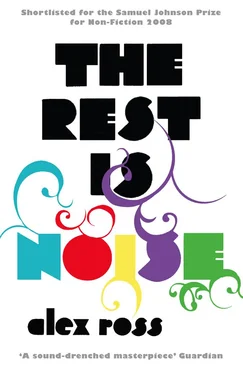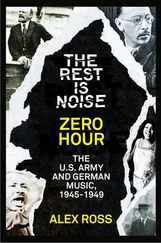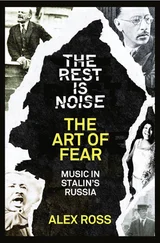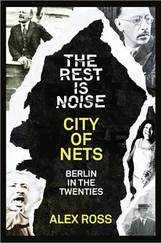The notion of a female sacrifice was Stravinsky’s special contribution. As Lynn Garafola points out, no pagan people except for the Aztecs demanded the sacrifice of young girls. Stravinsky was giving voice not to ancient instincts but to the bloodthirstiness of the contemporary West. At the turn of the century, purportedly civilized societies were singling out scapegoats on whom the ills of modernity could be blamed: Russian townspeople were enacting pogroms of Jews, white Americans were lynching young black men, and, closer to home, the denizens of the sixteenth arrondissement had cheered on the anti-Semitic campaign against the Jewish patriot Alfred Dreyfus. Against that backdrop, the urban noises in Stravinsky’s score—sounds like pistons pumping, whistles screeching, crowds stamping—suggest a sophisticated city undergoing an atavistic regression.
More than a few people left the premiere both thrilled and chilled by the experience. Jacques Rivière, who took such joy from Petrushka, spoke no less rapturously of the Rite, but in the end he found himself falling into a despondent mood. “There are works that overflow with accusations, hopes, encouragements,” Rivière wrote. “You suffer, regret, take confidence with them; they contain all the beautiful perturbations of the spirit; you give yourself to them as to the counsel of a friend; they have a moral quality and always partake of pity.” The Rite, he admitted, was not among them.
War
When the guns began firing in August 1914, French, Russian, and English composers were swept away by the same patriotic fervor that had overcome their Austro-German counterparts. The long-standing resentment of Teutonic hegemony in the classical repertory blossomed into hate. In London, Strauss’s Don Juan was taken off a Proms concert. The League for the Defense of French Music sought to ban “infiltrations funèstes,” or fatal infiltrations, of enemy composers. Manuel de Falla urged colleagues to reject any “universal formula,” by which he presumably meant, as his biographer Carol Hess says, the “purely musical” ethos of the German canon. After the United States entered the war in 1917, Wagner disappeared from the Metropolitan Opera stage and Beethoven symphonies from programs in Pittsburgh. Karl Muck, the German-born conductor of the Boston Symphony, was thrown in prison on the spurious grounds that he had refused to conduct “The Star-Spangled Banner.” Stories circulated that Muck had been communicating with U-boats from his cottage in Seal Harbor, Maine.
Absurd as this musical paranoia now seems, it was activated by deep shock at Germany’s campaign of total war. Several significant composers lost their lives in ways that underlined the changing definition of combat. Albéric Magnard, composer of four eloquent Franckish symphonies, was burned alive along with a number of his works after he fired on marauding German soldiers from a window of his home. The refined Catalan composer Enrique Granados drowned in the English Channel after a passenger vessel he was traveling on was torpedoed by a German submarine. England mourned the loss of George Butterworth, who worked alongside folkish composers such as Grainger, Gustav Holst, and Ralph Vaughan Williams. Butterworth’s specialty was morris dancing, and on his expeditions into the countryside he made meticulous notes such as these:
Both hands touch lower chest
'' '' '' upper ''
clap
slap with opposite
Then Hey
He was killed in August 1916, aged thirty-one, during an early-morning assault on a German trench in the Battle of Pozières Ridge.
Maurice Ravel nearly died at around the same time. The tiny-framed composer should have been barred from military service, but, enraged by the bombing of Reims, he enlisted as a truck driver. By the spring of 1916 Ravel was deployed just behind the front lines, and witnessed the ghastly aftermath of the Battle of Verdun. He often had to weave back and forth on pockmarked roads as shells fell all around him. Once he found himself in an abandoned town on a sunny day, walking through the empty, silent streets. “I don’t believe I will ever experience a more profound and stranger emotion than this sort of mute terror,” he wrote. Another time he entered an abandoned château, found a fine Erard piano, and sat down to play some Chopin.
Such unreal experiences provide clues to the piano cycle Le Tombeau de Couperin, Ravel’s principal work of the war years. In the context of its time, Le Tombeau may seem a little precious, as if it were averting its gaze from the carnage. Not only the title but also the names of the movements—Prélude, Fugue, Forlane, Rigaudon, Menuet, and Toccata—look back to the French Baroque, paying homage to the harpsichord suites of Couperin and Rameau. But, as ever with Ravel, emotion smolders under the exquisite surface. Each piece is dedicated to a friend who died in battle; the old styles pass by like a procession of ghosts. There are also hints of muscle, glints of steel. Glenn Watkins, in his study of music during the Great War, argues that the metallic stream of tone in the Toccata is meant to suggest the twisting motion of a fighter plane. Ravel dreamed of being an aviator, a solitary hero in the sky.
Stravinsky spent the war in neutral Switzerland, urging humanity to resist “the intolerable spirit of this colossal and obese Germania,” but otherwise immersing himself in musical business. The creator of the Rite was entering a period of experimentation, momentarily uncertain about what to do next. Never entirely secure in his reputation as the leader of the moderns, he glanced around to see what his rivals were doing. During a 1912 visit to Berlin, he attended one of the early performances of Pierrot lunaire, and came away impressed by the economy of Schoenberg’s instrumentation, the use of a pocket orchestra of two winds, two strings, and piano. Next to the Wagner-sized orchestra of the Rite, the Pierrot band was like a motorcar speeding alongside a locomotive. Stravinsky effectively imitated Schoenberg in the second and third of his Three Japanese Lyrics, written after the Berlin visit.
If Richard Taruskin is right, Stravinsky drew lessons from the reviews of the Rite, both in Paris and back home in Russia. Parisians appreciated not just the wildness of the music but also its precision and clarity. Innately sympathetic to Stravinsky’s anti-Romantic attitude, they applauded his prominent deployment of winds and brass and his relatively minimal use of strings. Jacques Rivière, in his review in the Nouvelle Revue Française, emphasized what the Rite was not—it lacked “sauce” and “atmosphere,” it rejected “Debussysm,” it refused to behave like a conventional “work of art.” In the small-scale Cubist-Oriental opera The Nightingale, which Stravinsky began in 1908 and finished in 1914, Rivière heard the beginnings of a new kind of unsentimental, abstract music in which “each object will be set out apart from the others and as if surrounded by white.”
Meanwhile, in St. Petersburg and Moscow, Russian critics and musicians dismissed the Rite as so much trendy noise. Taruskin suggests that the confluence of praise abroad and criticism at home essentially impelled Stravinsky to cut his ties to home and to become a Western European composer: “By imperceptible degrees, [he] came to resemble his hosts and exploiters.”
The process of “progressive abstraction,” as Taruskin calls it, governed Stravinsky’s next big project, Les Noces, or The Wedding. The idea of a dance spectacle about a boisterous rural Russian wedding had first surfaced back in 1912. By the time Stravinsky began sketching the music, in the summer of 1914, he had lost interest in the lavish resources of the Rite, and was thinking in terms of a more limited orchestra of sixty players. As the years went by, even that ensemble came to seem too extravagant. In its final incarnation, which appeared in 1923, Les Noces was scored for singers, chorus, percussion, and four pianos. The critic Émile Vuillermoz called the result “a machine to hit, a machine to lash, a machine to fabricate automatic resonances.” The sound of Les Noces is not inappropriate to the action: it suggests a harsh truth of pre-twentieth-century life, which was that most marriages were the result of a preconceived parental design, not of spontaneous romantic feeling.
Читать дальше












